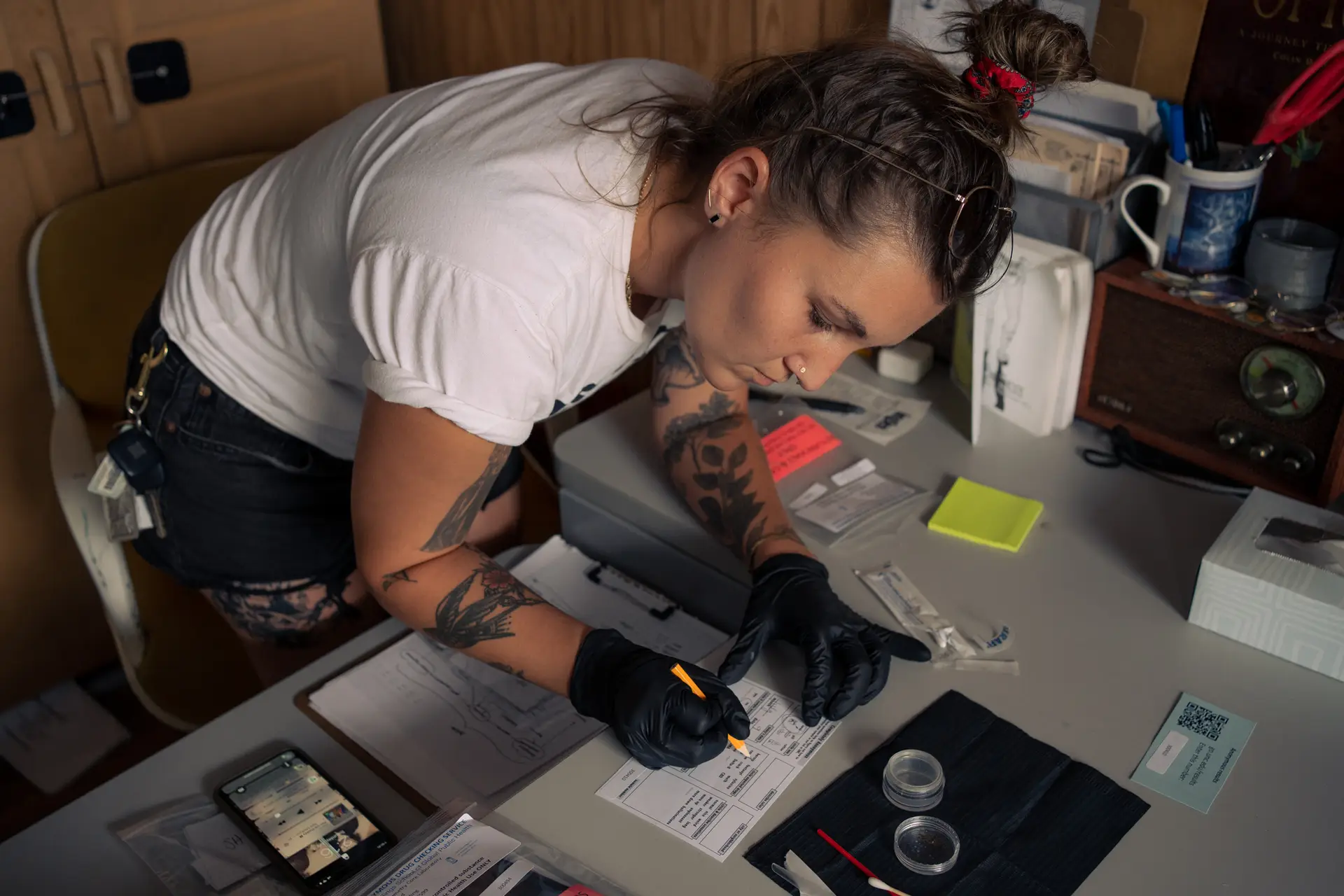More than 50,000 residents of WNC struggle with Substance Use Disorder (SUD). Annually, the region mourns the loss of over 200 community members due to overdose. The effects of SUD have harmed the lives of nearly half of all WNC residents. Due to a lack of robust health resources and the pervasive stigma around drug use, people who use drugs (PWUD) generally have access to fewer harm reduction resources in rural areas of WNC than in more urban areas, yet dangerous substance misuse is becoming more prevalent in rural communities. According to WNC Health Network, rural WNC county residents experienced a 5% increase in emergency department visits due to misuse of multiple substances between 2016 and 2019, and an additional 5% increase between 2019 and 2020.
Organizations that provide harm reduction services are critical to encouraging safer drug use, mitigating harm and reducing deaths. Holler Harm Reduction works with PWUD and those who care about them to fill this need in rural Madison County and North Buncombe County. Holler meets people where they are by delivering supplies to folks’ homes, or directly to them wherever they may be. Offering essential materials such as syringes (and syringe disposal services), naloxone/Narcan, fentanyl test strips, wound care supplies and personal care items, Holler provides judgement-free support and education to their participants.
“Our focus at Holler has always centered around community,” says Executive Director Ainsley Bryce. “We operate in very rural areas and with low income folks so we deal with a lot of isolation and stigma around drug use. Many of our participants don’t feel safe disclosing their use or related health issues when there are so few options for care. At Holler, we want to create spaces where drug users feel autonomous, supported and deserving of resources.”
Participants simply call or text 828-290-9066 to schedule a delivery during weekday business hours. Upon delivery the Holler volunteer or staff member collects basic demographic information that remains confidential, and may inquire about trends in local supply, recent overdoses, and engagement with law enforcement in order to provide additional support and advocacy as needed and maintain robust localized data.
Between 2021 and 2022 Holler saw a 4,850% increase in supply delivery demand, and continues to see exponential monthly demand increase from their service area and surrounding rural communities. In 2022, Dogwood partnered with Holler to support staff expansion, continued harm reduction supply acquisition and the creation of a drop-in community center that will offer training, education, overdose follow-up support, and more. The center will also serve as a safe space for PWUD to build relationships and community with one another without the threat of stigma, in turn reducing overdose death risk.
Committed to advocating for PWUD in the public sphere, Holler collaborates with organizations, businesses, and individuals seeking more inclusive policies to engage and support PWUD. By supporting the agency and autonomy of PWUD, Holler aims to ensure safe drug use and reduce the rates of overdose, infectious diseases and injection-related infections while adhering to the principles of harm reduction and promoting equity.


